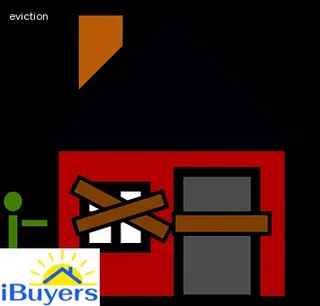The eviction process in Oklahoma can be a long and drawn-out affair, but with the right knowledge, it doesn't have to be. This step-by-step guide is designed to help landlords and property managers understand the full timeline of an Oklahoma eviction so they can make informed decisions about their rental properties.
The first step is for the landlord or property manager to provide written notice of intent to evict. This must include a description of the tenant's breach of contract, including any unpaid rent or other violations.
It must also include a demand for payment or correction within three days of receiving notice. Once this notice has been served, the tenant may either choose to pay off all owed balances or vacate the premises within that three day window.
If not, then the next step is for the landlord or property manager to file an Eviction Complaint with their local court system. After filing, they will receive a summons which must be delivered to the tenant before being able to proceed with legal action.
Finally, if no settlement is reached and the tenant does not vacate by a certain date, then an Order of Eviction will be issued by a judge which grants permission for physical removal of the tenant’s belongings from the rental property. With these steps in mind, landlords and property managers can better prepare themselves for navigating Oklahoma evictions in an efficient manner.

Eviction is a stressful process for both landlords and tenants. Before starting the eviction process, it is important to understand the laws in Oklahoma, as the timeline of the eviction can be different depending on specific circumstances.
Property owners should be aware of their legal rights and responsibilities during an eviction, while tenants need to know their rights as well so they can protect themselves. The landlord must follow state laws regarding proper notices, filing fees and court hearings when evicting a tenant.
Tenants should be familiar with the timeline for eviction proceedings so they can prepare accordingly if necessary. Additionally, property owners should also be aware of any local ordinances or regulations that might extend the length of an eviction process.
Understanding these considerations is essential in making sure that all parties involved are fairly represented and protected throughout the entire process.
When it comes to eviction proceedings, Oklahoma landlords and property managers must understand the legalities behind Oklahoma's laws. These laws can vary significantly from other states and are subject to change with legislative updates.
Eviction proceedings in Oklahoma are regulated by Title 41 of the state's statutes, which outlines the legal process for evictions. This includes the required notices to evict tenants, the amount of time they have to respond, and how long an eviction takes.
The landlord or property manager should be aware of their rights and responsibilities as outlined in Title 41 before filing an eviction notice. Additionally, landlords should be familiar with any local ordinances that may affect their ability to proceed with an eviction.
Understanding these regulations is essential for a successful outcome when it comes to enforcing an eviction in Oklahoma.

When it comes to eviction in Oklahoma, understanding the legal process is key. It's important for landlords and property managers to be aware of the steps required to create a legally compliant Notice to Comply.
The Notice must include the full tenant name, address of rental property, date of notice, length of time tenant has to comply, reason for non-compliance and landlord/property manager’s signature. Additionally, the Notice must be submitted in writing either via hand delivery or certified mail with return receipt requested and must provide tenant with at least three days to respond before filing an eviction lawsuit.
Finally, if the tenant still hasn't complied after receiving a Notice to Comply, a landlord or property manager can then proceed with an eviction lawsuit. Knowing how to properly create and deliver a Notice to Comply is essential when it comes to beginning the eviction process in Oklahoma.
When filing an eviction petition in Oklahoma, landlords and property managers should include all relevant information regarding the tenant. This includes their name, address, and any other contact information; the reasons for the eviction, whether it be for non-payment of rent or for violating a lease agreement; the time frame in which the tenant must vacate; and any court fees associated with filing.
Additionally, landlords should provide proof that they own the property and that they have provided proper notice to their tenants. They must also provide evidence of any payments made by the tenant as well as copies of any notices sent to them prior to filing.
Finally, the landlord must make sure that all legal documentation is up-to-date before submitting an eviction petition to the court. Filing an eviction petition incorrectly can result in delays in proceedings or even dismissal of the case.
Understanding what information needs to be included in an eviction petition is essential when filing for an eviction in Oklahoma.

Serving Notices & Documents to the Tenant in an Oklahoma Eviction Case is an important step in the eviction process. In Oklahoma, landlords or property managers must serve their tenants with a Notice to Vacate prior to filing an eviction lawsuit.
The Notice to Vacate is typically served by certified mail and must include specific language that informs the tenant of their right to remain on the property, as well as the amount of time they have to vacate. After the landlord has served the tenant with a Notice to Vacate, they can proceed with filing an eviction lawsuit if necessary.
This document must also be served on the tenant in a manner acceptable by law – usually by delivering it personally or via a third-party process server. Once served, tenants have five days to answer or contest the complaint in court.
Serving Notices & Documents is therefore essential for landlords and property managers when initiating an Oklahoma Eviction Case because it ensures that all legal requirements are met and that tenants are aware of their rights and obligations under Oklahoma law.
When it comes to evicting a tenant in Oklahoma, evidence and witnesses play a pivotal role. Landlords and property managers must be prepared with the necessary information to support their case during an eviction hearing.
This includes providing any relevant documents such as rental agreements, leases, letters of demand or notices to vacate. Witnesses are also essential to testify on behalf of the landlord.
They must be credible and able to attest to the facts surrounding the eviction dispute. Property owners should also be knowledgeable about Oklahoma's laws related to evictions so that they can better protect their rights in court.
To add further legitimacy to their case, landlords may consult with legal professionals who specialize in eviction cases. Ultimately, having strong evidence and reliable witnesses can make all the difference in ensuring a swift resolution of an eviction dispute in Oklahoma.

In Oklahoma, the process for seeking possession of property after a court ruling can be a long and complicated endeavor. Landlords and property managers should be aware of the various steps involved in eviction proceedings to ensure they are following the law.
To begin, a landlord must first file an eviction action with their local district court. After that, it is necessary to serve the tenant with notice of their legal rights and obligations as well as a summons to appear in court.
Once served, the tenant will either voluntarily vacate or contest the eviction proceedings. If contested, then a trial will take place where both sides present evidence and make arguments about why the court should or should not grant possession to the landlord.
The judge will then make a ruling on whether or not to issue an order for possession. If granted, then it is up to sheriff's office to carry out the order and remove any occupants from the premises.
In some cases, this process may take several weeks or even months depending on how much resistance there is from tenants or other factors. It is important for landlords and property managers in Oklahoma to understand exactly what is required legally when it comes to seeking possession of property after a court ruling so they can ensure they are taking all necessary steps in compliance with state regulations.
When it comes to eviction proceedings, landlords and property managers must be aware of when it is time to put their portfolio on hold. An eviction process in Oklahoma can take a substantial amount of time, as there are many steps for both the landlord and tenant to complete before the court decides who will prevail.
It is important for landlords and property managers to understand that an eviction case can last anywhere from two weeks to three months depending on how quickly each step is completed and individual state laws. Additionally, during this period of time all rental activities should be placed on hold until a final decision has been made.
This means that all rental applications should be paused, no new tenants accepted, and no deposits taken during the duration of the eviction process. Taking such measures will ensure that landlords and property managers are abiding by eviction laws while also protecting their investment portfolio.

The process of evicting a tenant in Oklahoma can be complex and time consuming. Property owners and landlords must understand the rights of squatters when it comes to eviction proceedings in OKC.
Squatters are individuals who have taken up residence on a property without permission or legal authorization from the owner. When someone is living in an abandoned property, they may be able to claim legal rights to the space if they have been there for a certain length of time.
Landlords must take this into consideration when navigating the eviction process, as squatters may be protected under state law. Furthermore, landlords should also ensure that proper notices are served to any potential squatter before initiating an eviction case.
Knowing your rights as a landlord and understanding how squatters laws apply can help expedite the eviction process and ensure that all parties involved are treated fairly throughout the process.
When appealing a court order related to an eviction in Oklahoma, it is important for landlords and property managers to understand the appeals process. First, you must file a Notice of Appeal with the clerk of the district court where the eviction took place, which should include your name, address, and attorney’s contact information if applicable.
The notice should also state the cause number (also known as case number) from the lower court, as well as any other pertinent information. Once filed, the notice will be served on all parties or their attorneys involved in the eviction case.
After that point, all documents relevant to your appeal must be submitted to the Court of Appeals within 20 days of filing your notice. You can expect to receive a response from the appellate court within 2-3 months after filing.
It is important to note that you cannot introduce any new evidence during this stage; your goal is simply to demonstrate why you believe that errors were made by the lower court and that its decision should be reversed.

The CARES Act, or Coronavirus Aid, Relief, and Economic Security Act, was passed in March 2020 in response to the economic crisis caused by the Coronavirus pandemic. This act provides much-needed relief to Oklahomans struggling with their housing situation due to job losses and other economic hardships.
In particular, the CARES Act provides a moratorium on evictions for tenants living in certain properties covered by the act. This federal law also provides financial assistance to landlords and property managers who are unable to collect rent payments from their tenants.
As a result of these measures, the eviction process in Oklahoma has been significantly impacted and landlords have had to adjust their procedures accordingly. Additionally, it is important for landlords and property managers to understand that there are still state laws governing evictions that must be followed even when there is a federal moratorium in place.
Understanding all of these regulations will help ensure a smooth eviction process that takes into account both the tenant's rights as well as the landlord's interests.
The legal process of eviction in Oklahoma is known as a Forcible Entry and Detainer Action. This action allows landlords and property managers to take possession of their property from tenants who have failed to pay rent or have violated other terms of the lease agreement.
In order to begin the eviction process, a landlord must first serve the tenant with a written notice that provides them with either three days or thirty days to vacate the property, depending on their particular situation. Once this notice has been served, if the tenant has not vacated, then a lawsuit can be filed in court called an Unlawful Detainer Action.
The court will hear arguments from both landlord and tenant, and then issue a judgment regarding possession of the property. Depending on how quickly all involved parties act, this entire process can typically take anywhere from two weeks up to two months or more.
It is important for landlords and property managers in Oklahoma to understand their rights and obligations under state law in order to successfully navigate through the eviction process.

When it comes to an unlawful detainer action in Oklahoma, there are many common reasons. These range from failure to pay rent on time, not complying with lease and rental agreement terms, or damaging the property.
In all of these cases, landlords and property managers must understand their rights as well as the rights of their tenants involved in an eviction case. Free resources are available for both parties to provide guidance for navigating the process.
It is important to know that according to Oklahoma law, the eviction process can take anywhere from a few weeks up to two months depending on the circumstances and any potential appeals by the tenant. Before making a move against defiant tenants in OK, it is essential that property owners and managers are aware of all relevant state laws including those regarding security deposits and other fees associated with evictions.
Self-help measures can be used as a legal method for evicting unwanted tenants, yet these come with both advantages and disadvantages which should be carefully weighed before proceeding. Furthermore, rules must be followed when it comes to rent increases and late payments during an eviction case so landlords should always be familiar with these laws before proceeding.
Yes, in Oklahoma, landlords and property managers have 30 days after they serve an eviction notice to their tenant. The eviction process starts with the landlord or property manager giving the tenant an eviction notice.
This notice typically requires the tenant to either pay rent that is past due or move out of the premises. If the tenant does not comply with this request, then the landlord or property manager can take legal action and file for eviction in court.
Depending on the county where the property is located, it may take anywhere from one to four weeks for a hearing date to be set. After a hearing date has been set, the judge will render a decision about whether or not the eviction should be granted.
If it is granted, then it will usually give landlords and property managers 30 days from that point to remove any remaining occupants from their rental unit.

Evictions can have long-lasting impacts on a tenant's rental history, so if you're a landlord or property manager in Oklahoma City OK, it's important to understand how long the eviction process takes.
While the exact length of time will depend on the specific case, most evictions take between 30 and 90 days to show up on someone's record.
This timeframe includes filing an eviction notice with the court, waiting for a court ruling and then having the judgment entered into a public database.
If you need to evict a tenant quickly, it’s best to consult an experienced lawyer who can help guide you through the legal process and ensure that your case is adjudicated as quickly as possible.
In Oklahoma, landlords must provide tenants with a minimum of three days’ notice to vacate the premises. The eviction process can be a lengthy one after this notice is issued, so understanding the timeline for when and how much notice is required is essential for landlords and property managers in Oklahoma.
This guide explains the legal requirements for how long a landlord has to provide notice to evict a tenant in Oklahoma and outlines what happens during the eviction process. The specific rules vary depending on whether the tenant has an oral or written rental agreement and other factors, but in most cases, a landlord must provide at least three days’ written notice before filing an eviction action in court.
Additionally, there are certain steps that must be taken by both parties throughout each stage of the process. Understanding these requirements can help landlords and property managers avoid any legal pitfalls that could result from failing to follow proper procedure.
A 15 day eviction notice in Oklahoma is a legally binding document that serves to inform a tenant that they must vacate their rental property within 15 days. This type of notice is used by landlords and property managers when they are seeking to evict a tenant for non-payment of rent or other lease violations.
The eviction process in Oklahoma can be lengthy and complicated, so it's important for landlords and property managers to understand what a 15 day eviction notice entails, how it should be served, and the timelines involved. When served properly, the 15 day eviction notice sets in motion the legal process of evicting a tenant from the premises.
Furthermore, the timelines mandated by Oklahoma law will determine how long it takes for an eviction to become effective.
A: Generally, the eviction process can take anywhere from two to four weeks in Oklahoma.
A: The eviction process typically takes between 2-4 weeks from the time a Notice of Eviction or Notice to Quit is issued until the tenant is legally evicted.